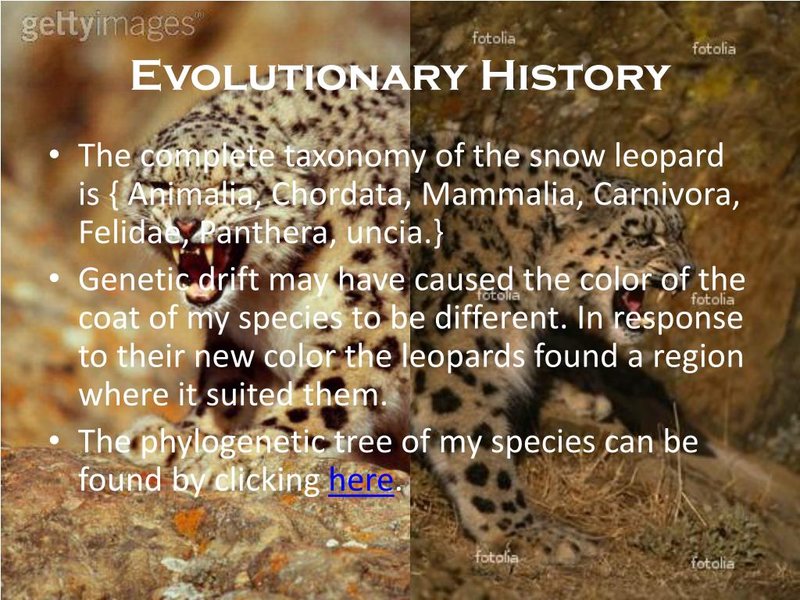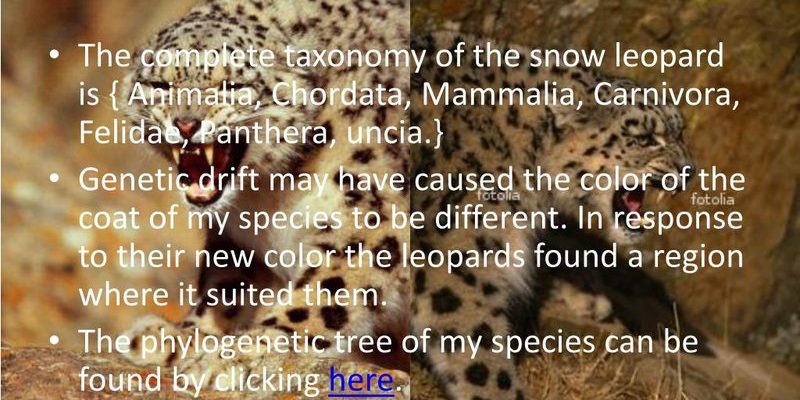
Leopards belong to the Panthera genus, which also includes lions, tigers, and jaguars. All these species share a common ancestor, but the paths they took diverged long ago. The evolution of leopards is a story of adaptation: their spots, hunting strategies, and habitats all reflect the environments where they thrived. So, let’s grab a cup of coffee and dive into the intricate web of history that has led to the splendid leopard we admire today.
The Origins of Big Cats
To truly appreciate the history of leopards, we need to start way back—about 10 to 15 million years ago. This is when the big cats began to split from their smaller relatives. Before this separation, the Felidae family, which includes all cats, was starting to diversify. The first big cats appeared, and they were quite distinct from the felines we’re familiar with today.
Among these early big cats, the common ancestor of leopards and other species emerged. It’s believed that leopards branched off around two to three million years ago. This period marked the time when leopards began to adopt traits that set them apart, including their iconic spotted coats. These spots aren’t just for show; they help camouflage leopards in the dappled light of their forest habitats.
So, if you can imagine a world filled with vast forests and open savannahs, that’s where leopards started to carve out their niche. They developed a hunting style that relied on stealth and agility—traits that would help them thrive in a wide range of environments.
Evolution of Adaptations
As leopards evolved, they developed some remarkable adaptations that helped them survive and thrive. Their rosette-patterned coats are one of the most iconic features. The spots not only provide camouflage but also allow them to remain hidden from both prey and potential threats. You might visualize a leopard resting on a tree branch, blending seamlessly with sun-dappled leaves.
Their powerful bodies are built for climbing and sprinting. Leopards can climb trees with impressive prowess, a skill that allows them to escape larger predators like lions and tigers. Plus, their strong limbs and flexible bodies enable them to reach speeds of up to 36 miles per hour in short bursts. Talk about being built for agility!
Even their hunting techniques are fascinating. Leopards are solitary hunters, which means they rely on stealth and strategy rather than sheer numbers. They often stalk their prey, using their keen eyesight and acute hearing to stay undetected. Once they’re close enough, they pounce with incredible speed. This adaptability in hunting styles has allowed leopards to flourish in diverse environments—from dense jungles to open grasslands.
Geographical Expansion
As leopards adapted to their environments, they also began to spread out geographically. At first, they were predominantly found in Africa and parts of Asia, but over time, their range expanded significantly. Fossils suggest that leopards once roamed as far as Europe and even parts of the Indian subcontinent.
Their ability to thrive in various habitats plays an important role in this expansion. From the arid deserts of Namibia to the rich forests of Southeast Asia, leopards have proven their adaptability. They can alter their behaviors, diet, and even hunting techniques based on their surroundings. For instance, in regions where prey is scarce, leopards might adapt by becoming more opportunistic hunters, preying on small animals or scavenging leftovers.
However, the story of expansion isn’t entirely positive. As human populations grew and urban areas expanded, leopards faced significant threats. Habitat loss and hunting have pushed their populations to the brink in some areas. This leads us to the notion that adaptability doesn’t only apply to leopards, but also to humans—how we manage our impact on the environment will significantly affect future generations of these magnificent cats.
Leopards in Mythology and Culture
Leopards haven’t just evolved biologically; they’ve also made their mark on human culture and mythology. Across various civilizations, these big cats have been symbols of power, agility, and beauty. In ancient Egypt, leopards were associated with the goddess Sekhmet, representing strength and protection. You might even recall tales from African folklore where leopards are depicted as cunning and wise, often outsmarting their foes.
These cultural representations highlight the leopard’s dual nature: feared yet revered. Their distinctive coats have inspired artists and artisans for centuries, leading to their portrayal in art, fashion, and even architecture. The fascination with leopards transcends borders, as they’ve become universal symbols of elegance and ferocity.
Even today, in wildlife documentaries and nature programs, leopards capture our attention. They’re often portrayed as the embodiment of the wild, effortlessly showcasing their hunting prowess. This ongoing relationship with culture underscores the importance of these big cats in both our natural world and societal narratives.
Modern Challenges and Conservation Efforts
Unfortunately, leopards today face a host of challenges that jeopardize their survival. The expansion of agriculture, urban development, and climate change have all contributed to habitat loss. As their natural environments dwindle, leopards become more isolated, which can lead to a decrease in genetic diversity.
Conservation efforts are critical to ensuring the future of leopards. Organizations around the world are working on various fronts—habitat restoration, anti-poaching initiatives, and public education campaigns. These efforts aim to raise awareness and promote coexistence between humans and leopards.
Community involvement is also key. Local people can play a vital role in conserving leopards by helping protect their habitats and understanding the importance of biodiversity. This partnership can create a more sustainable future for both leopards and the ecosystems they inhabit.
Leopard conservation isn’t just about saving a species; it’s about preserving a greater narrative of our planet’s wildlife.
The Future of Leopards
Looking ahead, the future of leopards hangs in a delicate balance. Their evolutionary history shows us that they are resilient creatures, having adapted to various challenges over millions of years. But the current issues they face require immediate attention and action.
It’s clear that understanding their history is not just about biology; it’s a call to action. The more we know about leopards and their evolutionary journey, the better equipped we are to help protect them. Initiatives focused on habitat preservation, anti-poaching efforts, and community education are crucial steps we can all support.
So, the next time you catch a glimpse of a leopard in a documentary or even a zoo, remember that you’re witnessing not just a beautiful animal but a story of survival, adaptability, and a species that has walked this Earth for millions of years. Together, we can help ensure that leopards continue to roam our planet for generations to come.
In conclusion, leopards are a remarkable example of evolution, adaptation, and the interconnectedness of life. Their journey is far from over, and with collective effort, we can contribute to a brighter future for these enchanting big cats.

